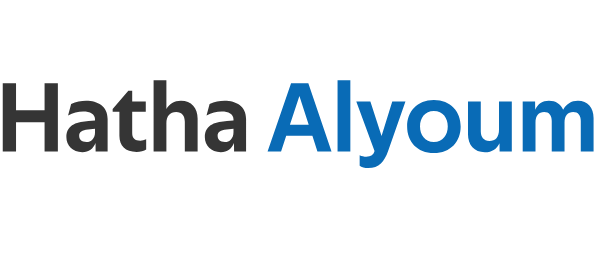World: GFDRR Annual Report 2019 - Bringing Resilience to Scale
Executive Summary
About This Report
This Annual Report highlights the progress and results achieved during FY19. It provides an overview of grant making activities in six regions and across GFDRR’s eight targeted areas of engagement. It explores some areas of the work in greater depth and includes financial statements for the fiscal year. GFDRR is committed to further strengthening its monitoring and evaluation (M&E) systems, ensuring that evidence and lessons from across the portfolio inform management decisions, accountability, and learning. Results of the FY19 program, as measured against the Facility’s results indicators, are available in the report’s annex.
About GFDRR
GFDRR’s portfolio continues to grow in its support for disaster and climate resilience needs. During FY19, the Facility committed $83.6 million in funding to 172 new grants. At the end of the fiscal year, the active portfolio included 369 active grants covering 142 countries, for a total commitment amount of $267.6 million. These grants address a full range of natural hazards, with flooding, earthquakes, and landslides continuing to receive the greatest share of support. All GFDRR grants contribute to achieving the Sendai Framework’s goal, as well as its targets and priorities for action.
Regions
Core to GFDRR’s vision is helping countries bring resilience to scale. Active grants in FY19 covered 142 countries across all six regions.
The Africa region was once again the largest in GFDRR’s active portfolio and included 78 active grants worth $77 million. Grants supported the countries of Comoros, Malawi, Mozambique, and Zimbabwe in recovering from the impacts of Cyclones Idai and Kenneth. In Sierra Leone, technical assistance for collecting flood and landslide data allowed the government to reduce the transport sector’s vulnerability, and informed the design of an IDA-financed $50 million urban transport project. In Kampala, Uganda, local authorities worked to improve coordination among communities for emergency response. Progress was made in giving countries access to advanced financial instruments, such as Development Policy Loans with a Catastrophe Deferred Drawdown Option (Cat DDO). Emphasis was also placed on strengthening institutional capacity for disaster risk financing.
At the end of FY19, GFDRR had an active portfolio in the East Asia and Pacific region of 51 grants, worth a total of $29.4 million. Technical assistance helped to leverage financing for recovery efforts in Sulawesi, Indonesia after a devastating earthquake and tsunami, and in the completion of a post-disaster needs assessment (PDNA) in Lao PDR after severe flooding. Across the region, risk considerations were embedded in infrastructure investments, and progress was made in improving countries’ access to regional risk pools, such as Southeast Asia Disaster Risk Insurance Facility (SEADRIF). In Vietnam, GFDRR assisted the government with a pilot for the design and construction of climate-resilient, ultra–high-performance concrete (UHPC) bridges.
At the end of FY19, GFDRR’s active portfolio in Europe and Central Asia totaled 44 grants worth $30.2 million, supporting work in almost every country in the region. A focus in FY19 was on scaling up DRM initiatives and mainstreaming urban resilience into municipality policies and investment plans. Other priority areas of engagement in the region for FY19 included promoting open access to risk information, advancing resilient infrastructure, supporting effective first response, building DRM capacity, and mainstreaming DRM into policy and legislation. In Bosnia and Herzegovina, GFDRR supported authorities in mainstreaming disaster risk management into the country's road network management practices.
In the Latin America and Caribbean region, GFDRR’s active FY19 portfolio totaled 48 grants, worth $22 million. DRM considerations were integrated in infrastructure projects throughout the region, including drainage, transit, and school facilities. In Brazil, disaster risk was mainstreamed into territorial planning, public investments, and public finances. In Guatemala, the recovery efforts after 2018’s eruption of the Fuego volcano included the preparation of a Development Policy Loan with Catastrophe Deferred Drawdown Option (Cat DDO), in conjunction with support for advancing the government’s disaster risk management policy reform agenda.
GFDRR’s active FY19 portfolio in the Middle East and North Africa totaled 17 grants worth $7.5 million; 70 percent of grant funding contributed to projects in resilient infrastructure. Efforts were made to strengthen the institutional capacity of national meteorological and hydrological services in the region, and to advance innovations in strengthening social resilience and inclusion through comprehensive urban operations in fragile contexts. GFDRR supported rapid post-recovery needs analyses following flooding in Tunisia and Djibouti, and in Beirut, GFDRR worked with the municipality to develop a comprehensive urban resilience master plan, to secure private and public investment to tackle the city’s resilience needs.
At the end of FY19, GFDRR’s active portfolio in South Asia totaled 39 grants worth $28.3 million. GFDRR supported recovery efforts after flooding in Kerala, India, and Cyclone Fani in Anwar Pradesh and Odisha, India. Many countries in the region have expressed interest in developing social safety net systems; Sri Lanka and India are currently strengthening theirs through capacity building and analysis. In Colombo, Sri Lanka, task teams are working with the government to collect, share, and analyze risk data and information that will be key toward moving the city’s resilience agenda forward.



